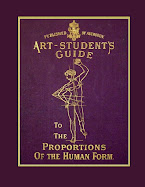Leonardo made an extensive study of painting in his treatise of painting. Along with many other subjects he addressed the portrayal of the human figure in action, showing how to draw a dynamic figure in order to bring life to paintings. The book is called Trattato della pittura By Leonardo (da Vinci), Preface of the life of the author by Carlo Amoretti, 1804. The plates reproduced here demonstrate some of the principles that he described.
Figure 22. The man carrying a weight on his shoulders illustrates how weight is balanced when a figure is carrying an object, as the caption states the entire weight of the object and of the man is balanced over a vertical line drawn through the foot which supports most of the weight. The figure bends slightly in a contrapposta pose in order to balance the weight. The right leg supports the weight, the left leg is thrown slightly away from the body. He raises the left hip and lowers the right to offset the weight. An imaginary line may be drawn between the weight on the man's shoulder and his right heel to demonstrate the center of gravity.
Translation:
CAP. CC. A Man carrying a weight on top his shoulders.
The man's shoulder that supports the weight is always higher than the shoulder without weight, and this is shown in the figure (Fig. 22.), the weight of the entire man and the weight he carries passes through the center line which passes through the center of the leg which bears the weight, the entire composition would be ruined if it did not do so, you need to ensure that the natural weight of the man is thrown to the side to equal the weight which he is carrying, you cannot do this if the man does not bend and does not lower his lighter side, and you cannot do this if the shoulder that bears the weight does not raise. By this means the artifice is found to illustrate this action.
CAP. CC. Dell'uomo che porta un peso sopra le sue spalle.
Sempre la spalla dell'uomo che sostiene il peso è più alta che la spalla senza peso , e questo si mostra nella figura , (Fig. 22.), per la quale passa la linea centrale di tutto il peso dell' uomo , e del peso da lui portato; il qual peso composto se non fosse diviso con egual somma sopra il centro della gamba che posa , sarebbe necessità che tutto il composto rovinasse: ma la necessità provvede che tanta parte del peso naturale dell' uomo si getta da un de'lati, quanto è la quantità del peso accidentale che si aggiunge dal 'opposito lato; e questo far non si puo se l'uomo non si piega e non s'abbassa dal lato suo più lieve con tanto piegamento che partecipi del peso accidentale da lui portato; e questo àr non si può se la spalla del peso non si alza , e la spalla lieve non s'abbassa . E questo è il mezzo che l'artilìziosa necessità ha trovato in tale azione.
Showing posts with label the figure in motion. Show all posts
Showing posts with label the figure in motion. Show all posts
Saturday, January 1, 2011
Subscribe to:
Posts (Atom)
















